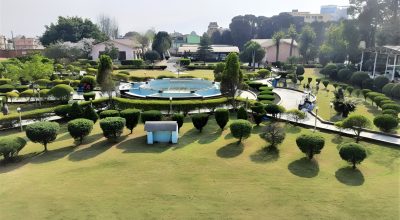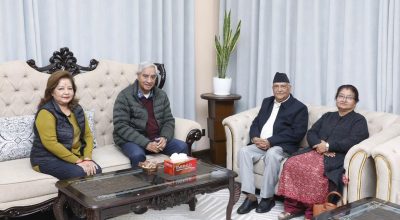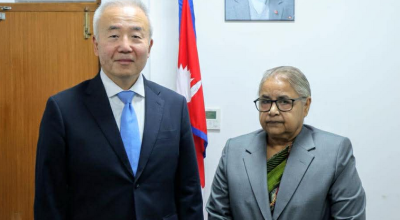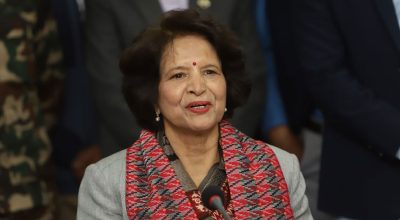
Ram Thapa
Pokhara, Oct 14: Known for his creative yet sometimes controversial works, singer and model Durgesh Thapa has now reached a point of self-reflection.
During the launch of his latest music video “Jhumka Harayo” released around Teej festival, Thapa announced, “From now on, I won’t create any offbeat controversial contents; I will only sing songs that are acceptable to all.”
He reiterated this statement while performing at a musical event in Australia during the Teej festival.
Despite gaining popularity for his unique style, many of his songs have sparked controversies. Many allege that he was dragging the age-old Nepali tradition a fun, and losely presenting sometimes by using derogtory words.
Now, his self-reflection might signal a new phase in his career.
The 37-year-old artist stated, “I feel that I’ve entered a new phase due to age, experience, and company. I am now striving to present myself in a more refined and mature manner compared to my early struggling days.”
With 18 years of experience in this field, Thapa has lived through both highs and lows. He is widely popular among the youth and teenagers and has accumulated experience from dance bars to films.
Around 2063 BS, when he left his hometown of Malma, Galkot Municipality-7, Baglung, for Kathmandu, his only dream was to become a model. Over time, he transitioned from acting to singing.
Thapa initially came to Kathmandu with the support of singer, lyricist and music composer Basanta Thapa, marking the beginning of his struggle in an unfamiliar city.
He credits Basanta Thapa for mentoring him in the industry. Despite his family’s wishes for him to join the army or find a stable job—given that his father had retired from the Indian Army—Thapa initially attempted to follow that path.
After completing his school education, he moved to Banaras with the intention of joining the Indian Army, thinking it would be easier due to his uncle’s service. However, after living there for some years, he abandoned the dream and returned home, later heading to Kathmandu to pursue a career in entertainment.
In 2065 BS, Thapa made his debut as a dancer and actor in the music video for Bimal Dandi’s Dashain song. His journey as an artist gradually evolved, leading him to sing his first folk duet “Andherima Jun Layeko Ho” with Purnakala B.C. before gaining fame as a model in the music video for “Maya Laayer Ke Bho.”
His performances in music videos for popular folk songs like “Dandai Bisouni” and “Hasna Sikayou” further solidified his presence in the Nepali music industry.
Despite being known for his stage performances and music videos, his early works in Teej songs, such as “Hami Pani Nachnu Parchha Bich Bichma,” gained massive popularity, with millions of views on YouTube. Thapa has announced the conclusion of this song series after its seventh version.
In addition to his musical career, Thapa has performed in films and lent his voice to songs in movies, such as his first promotional song for “Chha Maya Chhapakkai” and the current hit “Uthera Nachisyo” from the upcoming movie “Hraswa-dirgha.” He also worked on “Cha Bhane Maya Hai Bhana” for the movie “Rangi.”
He has a record of singing 45 songs and acted on more than 1500 music videos.
Despite controversies surrounding some of his songs, including facing bans from performance platforms for a Teej song’s content, Thapa remains a resilient figure in the industry. His experiences in Kathmandu’s dance bars and his passion for acting have pushed him to continuously improve and evolve.
Today, Thapa is one of the leading performers, both in music videos and on stage, and has toured countries like Australia, Japan, and Iraq. With over a million YouTube subscribers and several awards under his belt, he continues to be a significant force in Nepali entertainment. #NepaliSong #durgesh










